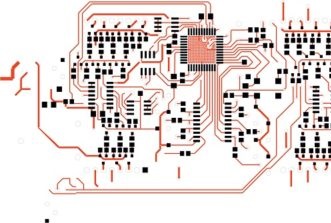This website uses cookies so that we can provide you with the best user experience possible. Cookie information is stored in your browser and performs functions such as recognising you when you return to our website and helping our team to understand which sections of the website you find most interesting and useful.
Resistivity Definition
11/12/2022, hardwarebee
Resistivity in electronics refers to the measure of resistance of a material to the flow of electric current. It is represented by the Greek letter ρ (rho) and is calculated by dividing the electrical resistance of a material by its cross-sectional area and length.
Resistivity is an inherent property of a material and is determined by its atomic structure, temperature, and the presence of impurities. Different materials have varying levels of resistivity, ranging from high resistivity (e.g. rubber) to low resistivity (e.g. copper).
In electronic circuits, resistors are used to control the flow of electric current by introducing resistance to the circuit. The value of resistance is determined by the material used to manufacture the resistor and its dimensions.
For example, a resistor made of a material with high resistivity will have a higher resistance value compared to a resistor made of a material with low resistivity. This allows electronic circuits to be designed with the desired level of resistance to control the flow of electric current.
Resistivity is an important parameter in the design and performance of electronic circuits, as it directly affects the overall resistance of the circuit. In circuits with high resistance, the flow of electric current is reduced, which can cause the circuit to operate at lower power levels. On the other hand, in circuits with low resistance, the flow of electric current is increased, which can cause the circuit to operate at higher power levels and potentially damage the circuit components.
Furthermore, resistivity also plays a role in the behavior of electric current in different materials. For example, in metals with low resistivity, electric current flows easily, making them suitable for use in electrical wiring and other applications requiring the transmission of electric current. On the other hand, in insulators with high resistivity, electric current does not flow easily, making them suitable for use in applications where electric current needs to be blocked or controlled.
In summary, resistivity is a measure of the resistance of a material to the flow of electric current. It is an important parameter in the design and performance of electronic circuits, as it directly affects the overall resistance of the circuit and the behavior of electric current in different materials.










